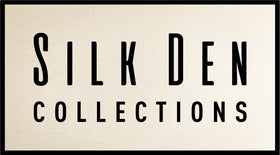What is a Michiyuki Coat (道行コート)

A michiyuki coat (道行コート) is a traditional Japanese outer garment worn over a kimono to protect it from the elements, such as wind, rain, or dust. The michiyuki is characterized by its distinctive square neckline, front opening with snap buttons or ties, and a generally straight, boxy shape. It is both functional and stylish, often worn by women, though there are also versions for men. Here’s more detail on its features and uses:
Key Characteristics of a Michiyuki Coat:
1. Square Neckline: The michiyuki is easily recognized by its unique square or rectangular neckline, which sets it apart from other Japanese coats like the haori. The square opening allows it to be comfortably worn over the kimono without interfering with the collar.
2. Front Closure: Michiyuki coats usually have a front closure, which can be snap buttons or hidden ties, allowing the coat to be fastened securely over the kimono.
3. Straight, Boxy Shape: The coat has a relatively straight silhouette, with wide sleeves and a slightly loose fit. This design allows the coat to drape gracefully over the kimono without adding bulk or restricting movement.
4. Materials: Michiyuki coats are typically made from silk, but can also be made from other materials such as wool, synthetic fibers, or blended fabrics. The choice of material often reflects the season, with lighter fabrics for spring and summer and heavier ones for winter.
5. Patterns and Colors: Like kimono, michiyuki coats come in a variety of colors and patterns. Some are solid-colored, while others may feature intricate designs or subtle textures. While it is an outer garment, it is still an opportunity for elegant expression, complementing the kimono worn underneath.
Function and Use:
• Protection from the Elements: The michiyuki is designed primarily to protect the kimono from weather conditions such as wind, rain, or dust. It serves a practical function while preserving the wearer’s outfit.
• Versatile Outerwear: In addition to being functional, the michiyuki adds an extra layer of style. Many michiyuki coats are beautifully made, serving as a fashionable outer garment for more formal occasions, or simply as a refined piece of everyday wear.
• Occasions for Wearing: Michiyuki coats are commonly worn during travel or when going outdoors, especially during colder months. They are used in both casual and formal settings, depending on the style and fabric of the coat.
Differences from Other Kimono Outerwear:
• Compared to Haori: The michiyuki differs from the haori (a traditional kimono jacket) in that it usually has a buttoned or tied front closure and a square neckline. The haori typically remains open in the front or is loosely fastened with ties, and its neckline is more rounded.
• Compared to Rain Coats (Amagappa): While michiyuki is sometimes worn in light rain, it is not a dedicated raincoat like the amagappa, which is specifically designed for wet weather with waterproof materials.
In modern times, vintage michiyuki coats have gained popularity as unique and stylish garments, often worn over Western clothing as well. Their blend of functionality, history, and beauty makes them an attractive choice for fashion enthusiasts.
